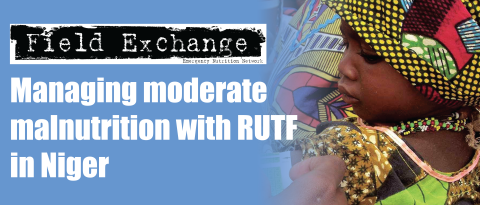Evaluation of cluster approach in Mozambique
Summary of evaluation1

Women displaced by floods wait to receive food rations at Chupanga camp, near Caia in Sofala Province.
A real time evaluation (RTE) of the response to the Zambezi river floods and Cyclone Favio in February 2007 makes interesting reading. The RTE was commissioned by a group of Inter Agency Standing Committee (IASC) agencies. The evaluation focussed on five critical areas:
- The use of the IASC cluster approach2 in Mozambique
- Emergency funding mechanisms including the Central Emergency Response Fund (CERF)3 and flash appeal
- Connectedness of the response with the longer term context
- The extent to which the needs of the affected population were met
- Support for local institutions.
The main findings of the evaluation were as follows;
The relief response was a success and although the operation was not perfect, there was no widespread suffering or avoidable deaths. Main reasons for the success were effective preparedness and coordination by government and the impact of humanitarian reforms, such as the cluster approach and the CERF.
The floods and cyclone in Mozambique were a relatively small emergency. This simplified the response. The introduction of the cluster approach was uneven but it did add to the quality of the response. Those who had also experienced the 2001 floods commented that coordination among the international humanitarian community was far better in the 2007 response.
The early deployment of an Office for Coordination of Humanitarian Affairs (OCHA) staff member from the Humanitarian Reform Support Unit helped to get the cluster system and the CERF application up and off the ground quickly. However, OCHA did not deploy a large enough team to properly support the roll out of the cluster system in Mozambique.
Cluster coordination is different from normal sectoral coordination. In normal sectoral coordination, agencies coordinate over the areas where their agencies' work overlaps, while each keeping their individual agency objectives. With clusters, the focus is not just on removing gaps and preventing duplication, but also on jointly moving towards commonly agreed cluster objectives. The cluster lead role, therefore, demands both participatory leadership and a broad presence in the field. Some clusters achieved this and others did not.
At the start of the response, non-governmental organisation (NGO) participation was threatened by press releases and situations reports that minimised their role, directive rather than participative management by cluster leads, and a lack of transparency in dealing with applications for CERF funding.
Not all cluster leads had a presence in the field, limiting their ability to capture information from the field level or to support coordinated action.
Overall the cluster approach was a success in Mozambique. It encouraged a cooperative ethos between agencies that led to a better quality and more effective response.
The CERF helped to ensure a rapid response, and a larger programme of assistance than would otherwise have been possible. The poor support for both the International Federation of the Red Cross (IFRC) appeal and the Flash Appeal suggests that without the CERF, relief funds would have been significantly less, especially in the first month of the response. However, agencies need to be better prepared so that they can prepare their CERF request faster.
Because of the time pressure, the CERF secretariat cannot vet applications for funding except in the most rudimentary way. Some clusters thoroughly discussed CERF applications before submitting them while others did not. Some of the activities funded seem much more appropriate than others and some control is needed to ensure that applications for CERF funds are of a higher quality than Consolidated Appeals have been in the past.
Growing local capacity is a key disaster preparedness measure. The strong performance of the Mozambican Red Cross in the response showed this. The CERF needs a mechanism to nurture such capacity during an emergency response.
Some aspects of the response in Mozambique represented the ideal of what a response in a developing country should be. In particular, and despite some constraints, the National Institution for Disaster Management (INGC) behaved as the very model of an ideal National Disaster Management Institute. The strong national coordination also helped with coordination of the international humanitarian response. Strong national coordination and good international coordination supported each other.
The RTE contained many recommendations that were categorised under three headings; IASC, HCT and other. These included:
- The IASC should develop a checklist for the country team to use when considering which agencies should lead clusters
- Members of the HCT should continue and deepen their support to INGC OCHA should quickly deploy teams to support cluster roll-out in other emergencies, supported by sufficient staff in-country for information management and a field presence to support inter-cluster coordination.
For more information on the Cluster Approach and the Nutrition Cluster, see news piece in this issue of Field Exchange.
1Inter-agency real-time evaluation of response to February 2007 floods and cyclones in Mozambique. Cosgrave. J et al, May 2007. Draft final version presented at IASC Working Group meeting 12th-15th June, 2007.
2See news piece on the cluster approach in this issue of Field Exchange.
3The Central Emergency Response Fund (CERF) is a stand-by fund established by the United Nations to enable more timely and reliable humanitarian assistance to those affected by natural disasters and armed conflicts. More information available at http://ochaonline.un.org/cerf/CERFHome/tabid/1705/Default.aspx
Imported from FEX website


